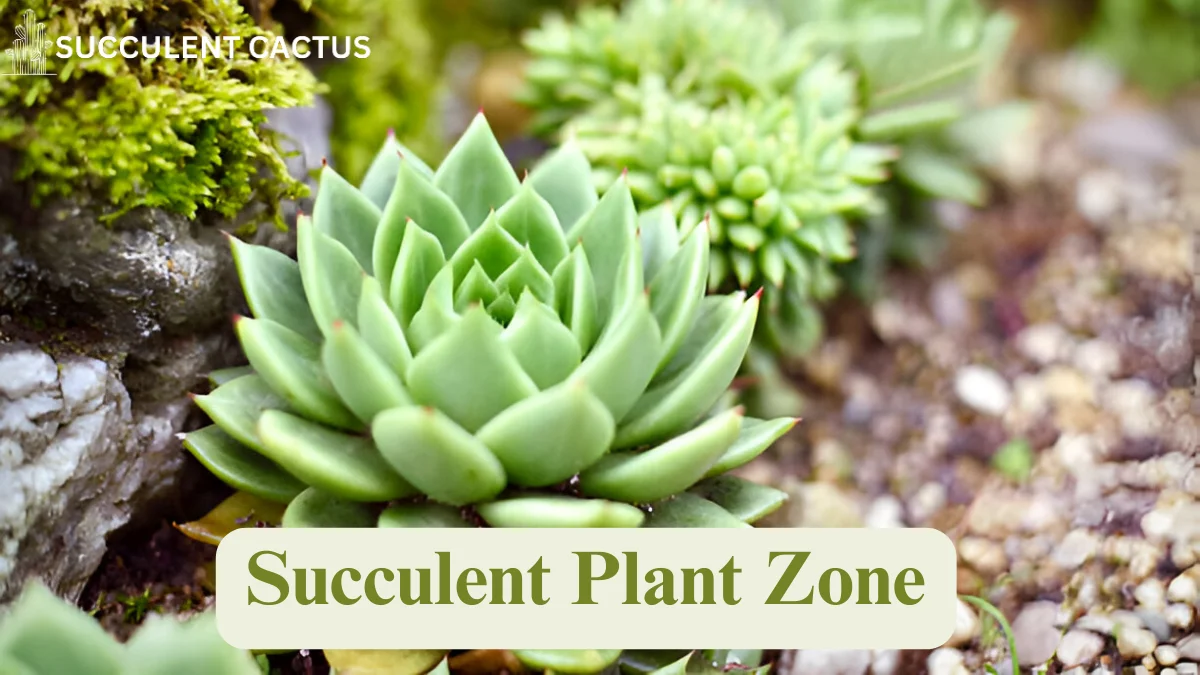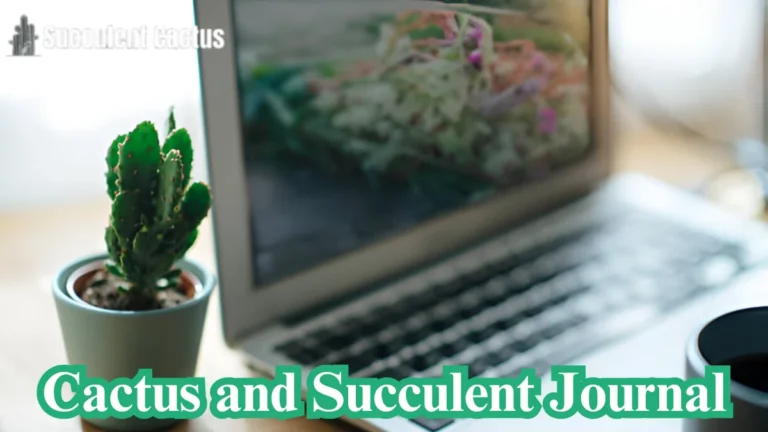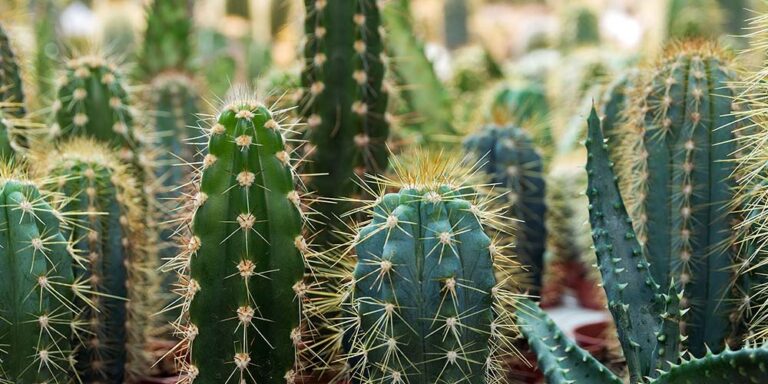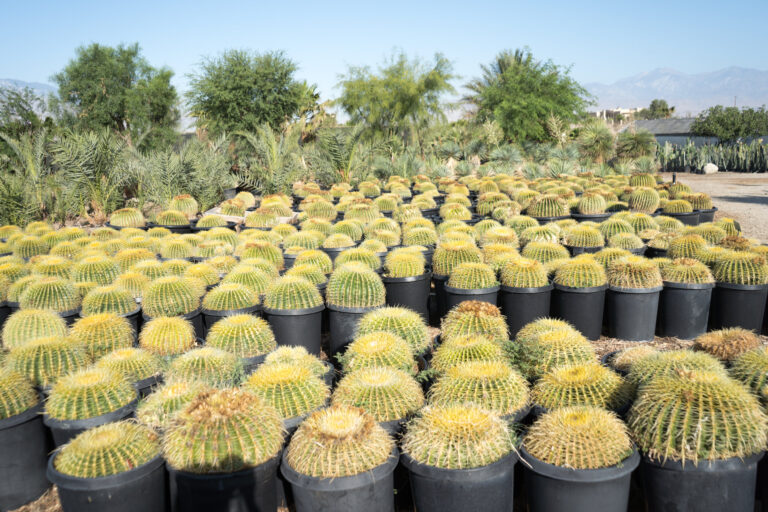Succulent Plant Zone: Understanding Climate Suitability for Succulents

Succulents are some of the most adaptable plants, thriving in various climates worldwide. However, not all succulents can survive in every region. Understanding succulent plant zone helps gardeners choose the right plants for their specific climate.
In this in-depth guide, we’ll explore how climate zones affect succulent growth, which succulents thrive in different hardiness zones, and how to create ideal conditions for succulents outside their native habitat.
What Is a Succulent Plant Zone?
Succulent plant zones refer to the climate conditions that determine which succulents can survive in a specific area.
Understanding USDA Hardiness Zones
The USDA Hardiness Zone Map divides regions into 13 zones based on their average minimum winter temperatures. Each zone represents a 10°F difference, with lower numbers indicating colder climates.
| USDA Zone | Winter Temperature Range (°F) | Suitable Succulents |
| Zone 3-5 | -40°F to -10°F | Cold-hardy succulents like Sempervivum and Sedum |
| Zone 6-8 | -10°F to 20°F | Agave, Opuntia, some Echeveria varieties |
| Zone 9-11 | 20°F to 50°F | Aloe, Crassula, Kalanchoe, Echeveria |
| Zone 12-13 | 50°F and above | Tropical succulents like Euphorbia and Haworthia |
Why Hardiness Zones Matter for Succulents
- Zones help determine which succulents will survive winter outdoors.
- Some succulents need frost protection in colder zones.
- Climate affects watering, soil, and sunlight needs.
Other Climate Factors Affecting Succulent Growth
- Humidity: Some succulents thrive in dry air, while others prefer more moisture.
- Rainfall: Too much water can cause root rot in succulents.
- Daylight hours: Longer daylight hours encourage faster growth.
Best Succulents for Cold Climate Zones (Zones 3-6)
While many succulents prefer warmth, some are cold-hardy and can survive in freezing temperatures.
Sempervivum (Hens and Chicks)
- USDA Zones: 3-9
- Cold Tolerance: Can survive temperatures as low as -30°F (-34°C).
- Care Tips:
- Needs well-draining soil to prevent root rot.
- Protect from excessive winter moisture.
- Thrives in full sun.
Sedum (Stonecrop)
- USDA Zones: 3-9
- Cold Tolerance: Hardy in sub-zero temperatures.
- Care Tips:
- Low-maintenance and drought-tolerant.
- Ideal for ground cover in cold regions.
- Prefers rocky, well-draining soil.
Opuntia (Prickly Pear Cactus)
- USDA Zones: 4-9
- Cold Tolerance: Can withstand temperatures down to -20°F (-29°C).
- Care Tips:
- Needs full sun and sandy soil.
- Tolerates occasional snowfall.
- Produces edible fruits and flowers.
Best Succulents for Warm Climate Zones (Zones 9-13)
Warm climate zones support tropical and desert succulents that thrive in hot, arid conditions.
Aloe Vera
- USDA Zones: 9-12
- Heat Tolerance: Grows well in hot, dry regions.
- Care Tips:
- Requires moderate watering.
- Prefers indirect sunlight in extreme heat.
- Can be grown indoors or outdoors.
Euphorbia
- USDA Zones: 10-13
- Heat Tolerance: Thrives in high temperatures with little water.
- Care Tips:
- Prefers well-drained soil.
- Can tolerate high humidity.
- Keep away from pets—toxic sap.
Haworthia
- USDA Zones: 9-12
- Heat Tolerance: Prefers mild, warm climates.
- Care Tips:
- Grows well in partial shade.
- Needs occasional deep watering.
- Works well as an indoor plant.
How to Grow Succulents Outside Their Recommended Zone
If your climate doesn’t match the ideal zone for a succulent, you can still grow them successfully with some adjustments.
Using Containers for Temperature Control
- Move cold-sensitive succulents indoors during winter.
- Use pots with drainage holes to prevent root rot.
- Choose light-colored pots to reflect heat in warm areas.
Creating Microclimates
- Plant succulents near rocks or walls for extra warmth.
- Use shade cloths to protect from harsh summer sun.
- Keep delicate succulents in greenhouses or cold frames.
Winter Protection for Outdoor Succulents
- Cover plants with frost cloths during extreme cold.
- Use mulch or gravel around roots to insulate them.
- Avoid overwatering—dry roots withstand frost better.
How Different Succulent Types Adapt to Zones
Succulents have evolved to survive in various climates.
Desert Succulents
- Thrive in hot, arid regions.
- Store water in thick leaves or stems.
- Examples: Agave, Aloe, Echeveria.
Tropical Succulents
- Prefer humid, warm climates.
- Need more frequent watering.
- Examples: Hoya, Kalanchoe, Dischidia.
Alpine Succulents
- Adapted to cold, mountainous regions.
- Can survive freezing temperatures.
- Examples: Sempervivum, Orostachys, Lewisia.
How Soil Affects Succulent Growth in Different Zones
Soil type plays a critical role in succulent survival, especially in extreme climates. The right soil ensures proper drainage, prevents root rot, and supports healthy growth.
Well-Draining Soil for Succulents
Succulents need fast-draining soil to prevent water retention.
Key Features of Succulent Soil:
- Sandy or gritty texture to allow water flow.
- Organic matter for nutrients.
- Low moisture retention to prevent rot.
| Soil Type | Best For | Drainage Level |
| Sandy Soil | Desert succulents | Excellent |
| Loamy Soil | Most succulents | Moderate |
| Clay Soil | Not suitable for succulents | Poor |
Soil Amendments to Improve Drainage
If your natural soil is heavy, improve it with:
- Perlite or pumice – Increases aeration and drainage.
- Coarse sand – Reduces water retention.
- Coconut coir – Enhances moisture control.
Choosing the Right Soil for Your Zone
- Zones 3-7: Use rocky soil to prevent excess moisture retention in winter.
- Zones 8-11: Mix sand and compost for a balance of nutrients and drainage.
- Zones 12-13: Use light, porous soil to prevent overheating.
The Role of Sunlight in Succulent Zones
Succulents require ample sunlight to thrive, but different zones present unique challenges.
Sun Requirements for Succulents
Most succulents need at least 6 hours of direct sunlight per day.
| Zone | Sunlight Needs | Best Growing Method |
| 3-6 | Partial sun (4-6 hrs) | Outdoor in summer, indoor in winter |
| 7-9 | Full sun (6-8 hrs) | Outdoor with occasional shade |
| 10-13 | Filtered sun (5-6 hrs) | Shade-protected outdoor areas |
Protecting Succulents from Sun Damage
- Use shade cloth (30%-50% shade) in extreme heat.
- Acclimate new plants gradually to full sun.
- Move pots to morning sun exposure and shade in the afternoon.
Low-Light Succulents for Indoor Growth
If your region has limited sunlight, consider these indoor-friendly succulents:
- Haworthia – Tolerates low light.
- Gasteria – Thrives in indirect light.
- Sansevieria (Snake Plant) – Can survive in artificial light.
Watering Succulent plant According to Climate Zone
Watering frequency depends on temperature, humidity, and soil type in different zones.
The “Soak and Dry” Method
A universal watering rule for succulents:
- Soak the soil thoroughly until water drains out.
- Wait until the soil dries completely before watering again.
Watering Guidelines by Zone
| Zone | Watering Frequency |
| 3-6 | Every 2-3 weeks (winter dormancy) |
| 7-9 | Every 7-10 days (moderate warmth) |
| 10-13 | Every 3-5 days (hot, dry climate) |
Preventing Overwatering and Root Rot
- Use terra cotta pots to help excess moisture evaporate.
- Ensure pots have drainage holes.
- Avoid watering during cold, dormant months in lower zones.
Temperature Extremes and Succulent Adaptation
Succulents need temperature stability to grow well. Some thrive in freezing winters, while others tolerate extreme heat.
Cold-Hardy Succulents for Frost-Prone Zones
For zones 3-7, choose frost-tolerant varieties like:
- Sempervivum (Hens and Chicks) – Can survive -30°F (-34°C).
- Sedum (Stonecrop) – Hardy in snowy regions.
- Opuntia (Prickly Pear Cactus) – Withstands sub-zero temperatures.
Heat-Tolerant Succulents for Hot Zones
For zones 10-13, choose succulents that handle extreme heat:
- Agave – Thrives in full sun.
- Euphorbia – Tolerates drought and heat.
- Aloe Vera – Prefers warm climates but needs shade in extreme heat.
Temperature Protection Strategies
- For cold zones: Use frost cloths and mulch around roots.
- For hot zones: Provide shade cloth and water during the evening.
Growing Succulents in Coastal and Humid Zones
Coastal climates present unique challenges like high humidity and salty air.
Challenges of Growing Succulents in Humid Areas
- High moisture increases the risk of fungal infections.
- Soil stays wet longer, increasing root rot risk.
- Sun exposure may be limited due to frequent cloud cover.
Best Succulents for Humid Climates
- Crassula (Jade Plant) – Tolerates humidity well.
- Kalanchoe – Thrives in tropical climates.
- Rhipsalis (Mistletoe Cactus) – Prefers warm, humid conditions.
Preventing Fungal Issues in Coastal Areas
- Use gritty, well-draining soil.
- Provide good airflow around plants.
- Avoid overhead watering to reduce mold growth.
Using Greenhouses for Non-Native Succulents
If your zone doesn’t naturally support succulents, greenhouses can regulate temperature and humidity.
Benefits of Greenhouse Succulent Growth
- Protects plants from frost and heatwaves.
- Controls humidity for better growth.
- Provides consistent light and warmth.
Types of Greenhouses for Succulents
| Greenhouse Type | Best For | Temperature Control |
| Cold Frame | Cold regions (Zones 3-7) | Limited heating |
| Polycarbonate | All climates | Moderate insulation |
| Glass Greenhouse | Zones 6-13 | Excellent light transmission |
Greenhouse Maintenance Tips
- Use ventilation fans to prevent excessive humidity.
- Install temperature sensors for climate control.
- Avoid overcrowding to promote air circulation.
Common Mistakes When Growing Succulents in Different Zones
Even experienced gardeners make mistakes. Here’s what to avoid.
Overwatering in Cold Climates
- Mistake: Watering succulents during winter dormancy.
- Fix: Reduce watering to once a month in cold seasons.
Sunburn in Hot Zones
- Mistake: Exposing plants to full sun too quickly.
- Fix: Gradually introduce them to direct sunlight.
Using the Wrong Soil Type
- Mistake: Planting succulents in dense, water-retentive soil.
- Fix: Use fast-draining cactus mix with sand or perlite.
FAQs
1. What is the best zone for succulent plant? Most succulents thrive in Zones 9-11, but some can survive in Zones 3-8 with proper care.
2. Can I grow succulents indoors if my zone is too cold? Yes! Use pots, provide bright light, and keep the temperature above 50°F (10°C).
3. What happens if I plant a succulent in the wrong zone? The plant may die in winter if it’s too cold or suffer from overwatering if the humidity is too high.
4. How do I protect succulents from freezing temperatures? Use frost blankets, plant in containers, and place them in sheltered areas.
5. Can I grow succulents in humid climates? Yes, but choose humidity-tolerant succulents like Hoya or Rhipsalis and ensure good airflow.
Conclusion
Understanding succulent plant zone is essential for choosing the right succulents and ensuring their survival. Whether you live in freezing winters or scorching deserts, you can successfully grow succulents by selecting zone-appropriate species or using climate control techniques like containers and microclimates.
By following this guide, you can create a thriving succulent garden no matter where you live! 🌵💚






